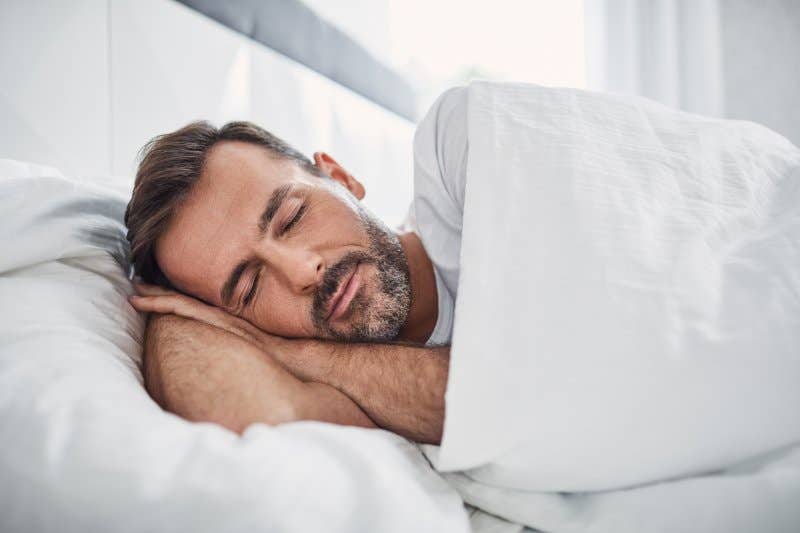Scientists just revealed a surprising link between sleep, memory, and breathing
Researchers have unveiled a significant connection between the way we breathe during sleep and the brain’s ability to consolidate memories.

Researchers have unveiled a significant connection between the way we breathe during sleep and the brain's ability to consolidate memories. (CREDIT: Creative Commons)
In a groundbreaking study published in Nature Communications, researchers have unveiled a significant connection between the way we breathe during sleep and the brain's ability to consolidate memories. This discovery sheds new light on the role of respiration in organizing memory-related processes during slumber.
The impetus for this innovative research stemmed from a desire to unravel the intricate interplay between various physiological processes and memory consolidation during sleep. Previous studies had already established the critical importance of specific sleep stages, particularly non-rapid eye movement (NREM) sleep, in strengthening memories.
During NREM sleep, the brain undergoes distinct oscillations or rhythmic activities, believed to be pivotal for transferring and solidifying memories. However, the precise regulation of these processes remained shrouded in mystery. As mounting evidence suggested that breathing influences cognitive functions during wakefulness, the researchers embarked on a quest to investigate whether respiration might similarly impact the brain during sleep.
To comprehend the study's significance, it's essential to grasp two key concepts: sleep-related oscillations and memory reactivation. Sleep-related oscillations refer to rhythmic brain activities during sleep, including slow oscillations and sleep spindles.
Related Stories
These oscillations are not random occurrences but are thought to be critical for memory consolidation—the process of converting fragile new memories into stable, long-term ones. Memory reactivation is the phenomenon where memories formed during wakefulness are 'replayed' and fortified during sleep, primarily during these specific oscillations.
Study author Thomas Schreiner, the leader of the Emmy Noether junior research group at Ludwig-Maximilians-Universität München's Department of Psychology, elucidated, "We know quite well that the memory function of sleep relies on the precise interplay of sleep-related oscillations. On the other hand, there is growing evidence that respiration impacts neural activity and cognition during wake. Hence, we were curious to assess whether respiration might take on a similar role during sleep by shaping sleep rhythms and ensuing cognitive processes."
Conducted at a sleep laboratory, the study involved 20 healthy participants, each monitored during two separate sessions spaced at least a week apart. This design aimed to eliminate any potential carryover effects from the first session to the second.
Before delving into the primary experiment, participants familiarized themselves with the sleep laboratory environment through an adaptation nap. This step was crucial to ensure their comfort and minimize potential disturbances or anxiety arising from sleeping in an unfamiliar setting.
The heart of the experiment was the nap period, during which participants were granted 120 minutes of sleep, while their brain activity, muscle activity, heart activity, and breathing were meticulously recorded. After the nap, participants' alertness was reevaluated using the psychomotor vigilance task (PVT), and their memory performance was tested once more.
To analyze the data, researchers focused on specific phases of the respiratory cycle and their synchronization with brain oscillations recorded in the EEG. They scrutinized patterns and correlations to unravel the intricate interplay of these physiological processes.
A pivotal discovery emerged: a significant association between breathing rhythms and specific brain activities during sleep, specifically slow oscillations and sleep spindles. Slow oscillations represent deep, slow brain waves during restorative sleep, while sleep spindles signify sudden bursts of oscillatory brain activity.
Researchers observed that these two types of brain activities were intricately synchronized with breathing patterns. Slow oscillations typically occurred just before the peak of inhalation, whereas sleep spindles tended to follow right after the inhalation peak. This synchronization appeared to be a fundamental aspect of how the brain orchestrates memory consolidation during sleep.
Digging deeper into the findings, Schreiner and his team uncovered that this coupling between breathing patterns and sleep-related brain oscillations significantly influenced memory reactivation. The strength of synchronization between breathing and these brain oscillations correlated with the extent to which memories were reactivated during sleep.
Experimental procedure. During encoding, participants were presented with 120 verb-object or verb-scene pairs (counterbalanced across sessions). (CREDIT: Nature Communications)
In essence, how participants breathed during sleep directly impacted the efficiency of their memory processing. This revelation implies that something as simple as breathing plays a pivotal role in orchestrating the brain's memory-related activities during sleep.
The study's findings underscore the vital role of sleep in both physical well-being and cognitive function. Schreiner emphasized, "Accordingly, it is quite important to maintain/establish good sleep hygiene and to act accordingly in case of compromised sleep (e.g., due to sleep-related breathing disorders)."
Respiration modulates sleep rhythms. Time–frequency representation of NREM sleep EEG data locked to inhalation peaks, contrasted against random data segments (mean z values across significant electrodes). (CREDIT: Nature Communications)
However, it's essential to acknowledge that the study's findings were correlational, meaning that while a connection between breathing patterns and brain activities during sleep was established, it does not necessarily imply a direct cause-and-effect relationship. Understanding the exact nature of this relationship necessitates further investigation.
Furthermore, the study primarily included female participants with an average age of around 21 years. Schreiner stressed the importance of future research involving more diverse populations in terms of age and sleep quality.
The impact of respiration on SO_spindles and memory reactivation. Determining the respiratory phases during the peak of the detected SO_spindles reveals a significant nonuniform circular distribution (two-sided V-test; Vmean = 9.46 ± 0.23, all P
Promising avenues for future research include exploring interventions that could enhance memory consolidation during sleep by targeting the relationship between breathing and brain rhythms. This could have significant implications, particularly for older adults who often experience declines in both respiratory function and memory capabilities.
While many questions remain unanswered, the research underscores the profound importance of sleep for our cognitive functioning and points toward potential avenues for enhancing memory consolidation in the future.
Tips for Better Sleep
Good sleep habits (sometimes referred to as “sleep hygiene”) can help you get a good night’s sleep.
Some habits that can improve your sleep health:
Be consistent. Go to bed at the same time each night and get up at the same time each morning, including on the weekends
Make sure your bedroom is quiet, dark, relaxing, and at a comfortable temperature
Remove electronic devices, such as TVs, computers, and smart phones, from the bedroom
Avoid large meals, caffeine, and alcohol before bedtime
Get some exercise. Being physically active during the day can help you fall asleep more easily at night.
For more information on sleep education, check out the resources here: http://www.sleepeducation.org/essentials-in-sleep/healthy-sleep-habits
Note: Materials provided above by The Brighter Side of News. Content may be edited for style and length.
Like these kind of feel good stories? Get the Brighter Side of News' newsletter.



